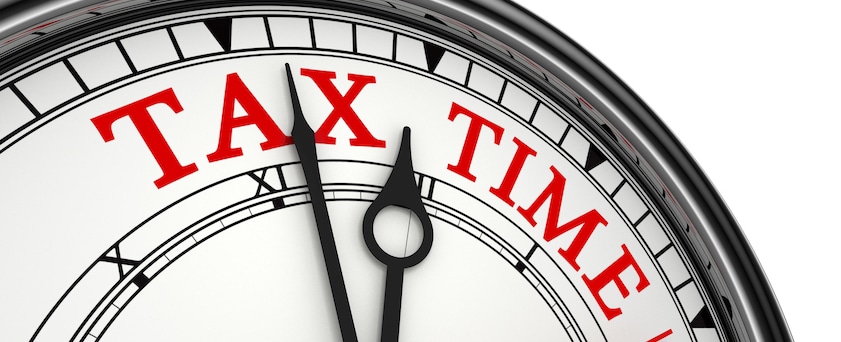How to File Small Business Tax Returns in 2020

Many small business owners anticipate the arrival of tax season with dread and wait to file until the last possible minute. This is a mistake, as approaching taxes with a proactive mindset can help you save money and start your new business year off on the right foot.
Here is your complete guide to filing your small business tax returns in 2020.
Determine Business Structure
The type of taxes that your business will pay depends on how a business elected to be taxed at the formation of the entity. The most common types are:
- Sole Proprietorship: If you are not incorporated and are the sole owner and operator of your business, you can pay taxes as a sole proprietor. You will need to fill out a Schedule C or Schedule C-EZ.
- Partnership: Unincorporated businesses with two or more owners will need to file as a partnership using Form 1065.
- C Corporation: If your business is incorporated, the business will pay tax at the Corporate level. Any distributions are treated as a dividend and taxed a second time at the shareholder level. To file as a C Corporation you will use Form 1120.
- S Corporation: Both C Corps and LLCs can elect to be taxed as an S Corp. As a shareholder or member of an S Corp, taxes are paid at the individual shareholder level. S Corps calculate income and expenses on Form 1120S.
- Limited Liability Companies: If your business is registered as a Limited Liability Company (LLC) with one owner you will report your income and expenses on Schedule C of your individual Form 1040. If your LLC has two or more members you will automatically be taxed as a partnership using Form 1065 unless an election to be taxed as an S Corp is made.
Once you have determined the appropriate way of reporting your taxes, you are ready to move forward.
Review Books and Gather Information
The most important thing to do before you start filling out any paperwork is to get all of the relevant financial information. This will help you determine the maximum deductions that you can get back and help you avoid expensive punishments for misreported tax information.
Make sure you have all of your tax identification information with you. This includes your social security number and employer identification number. If you are having trouble locating either of these, you can check old tax documents or contact the IRS.
Get all the financial records you will be using together. Some of the relevant documents you should makes sure you have before you start are:
- Income statements
- Payroll documents
- Bank statements
- Balance sheets
- Partnership contracts
- Previous tax statements
The more financial data you have that is current and in front of you before you start filing your taxes, the smoother tax season will go.
Consider Tax Deductions
While you are gathering your company’s financial records to do your taxes, start considering the business expenses that you might be able to deduct.
If you must spend money on something to run your business, there is a good chance you can get part of it back on your taxes. Company vehicles, client meals, space and equipment rentals, travel expenses and employee benefits are all examples of things that you can list on your taxes for a deduction.
Take the time to research where you can get a deduction, but also take the time to be aware of where you cannot. Small businesses tend to get audited more than individuals, so it is important to make sure your books are in order before this happens.
Find Out the Deadline
Even if you are getting the jump on your taxes this year, make sure you note all the relevant dates for filing your taxes. You don’t want to let anything sneak up on you and risk late fees or feel pressured to do a rush job.
There are two important dates for filing taxes for small businesses. The first is March 15th. This is the deadline for LLCs and partnerships to file Form 1065. It is also the deadline by which S Corporations must file Form 1120-S.
The other important date is April 15th. This is when sole proprietors and single member LLCs must submit their Schedule C or Schedule C-EZ and C Corps must file Form 1120.
Determine How to File
Know ahead of time how you will be submitting your taxes. While you can still file your taxes by mail, most businesses prefer to use the IRS’s e-file system. In fact, depending on your business, you may be required to file electronically. Businesses can file electronically either through a commercial tax prep software like Turbo Tax or through a tax professional who is an authorized IRS e-file provider.
It is also helpful to be familiar with these systems if you need to file for an extension. After all, you never know when a problem could come up that will prevent you from filing on time, despite your best intentions. NOTE: An extension of time to file is not an extension of time to pay. Any taxes due with the return must be paid by the original due date of the return.
With proper preparation you can get your business tax return in on time and with the best possible deduction.
Learn how SmartBooks helped one company save $280K through proactive tax planning in our case study below.
